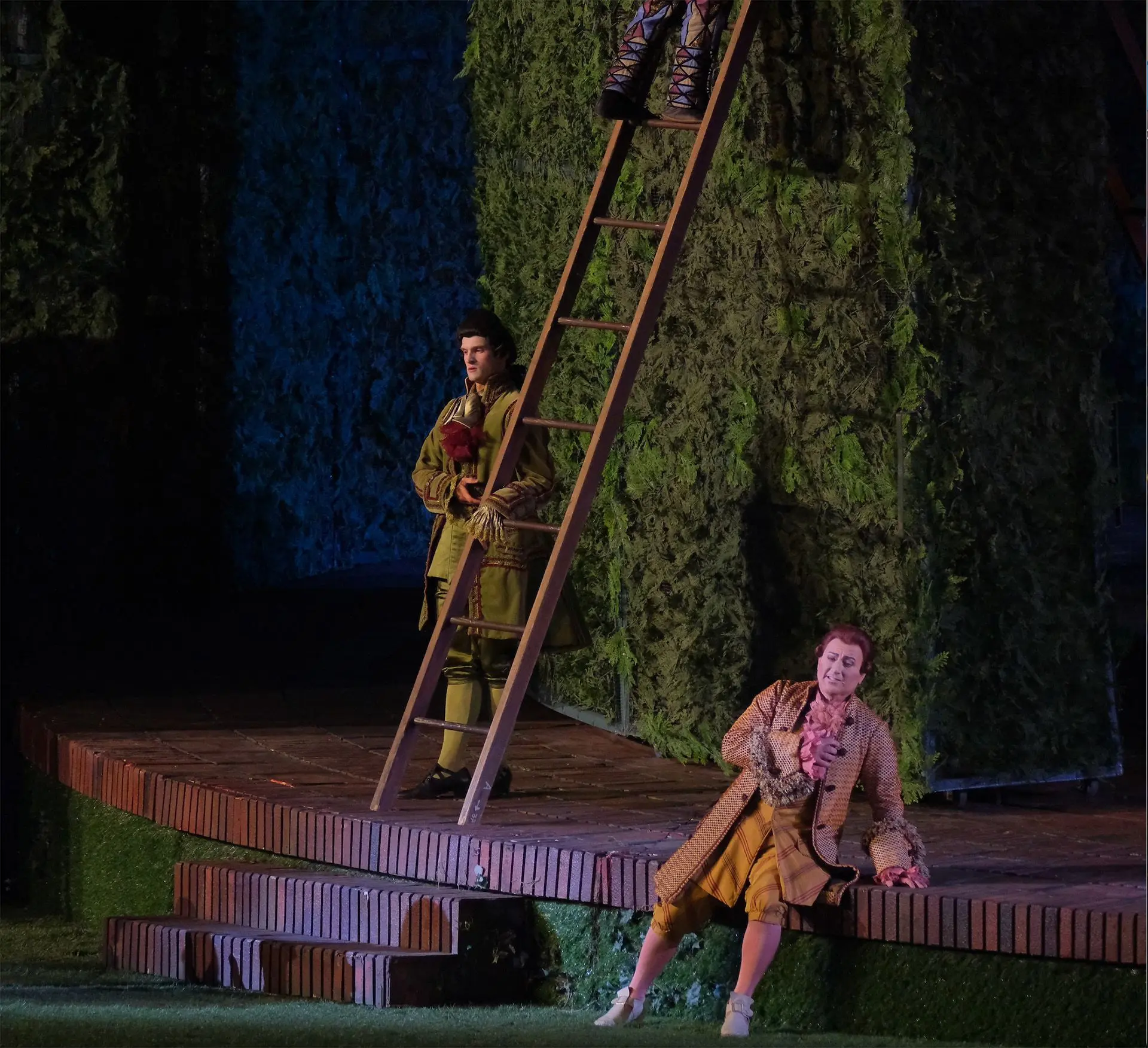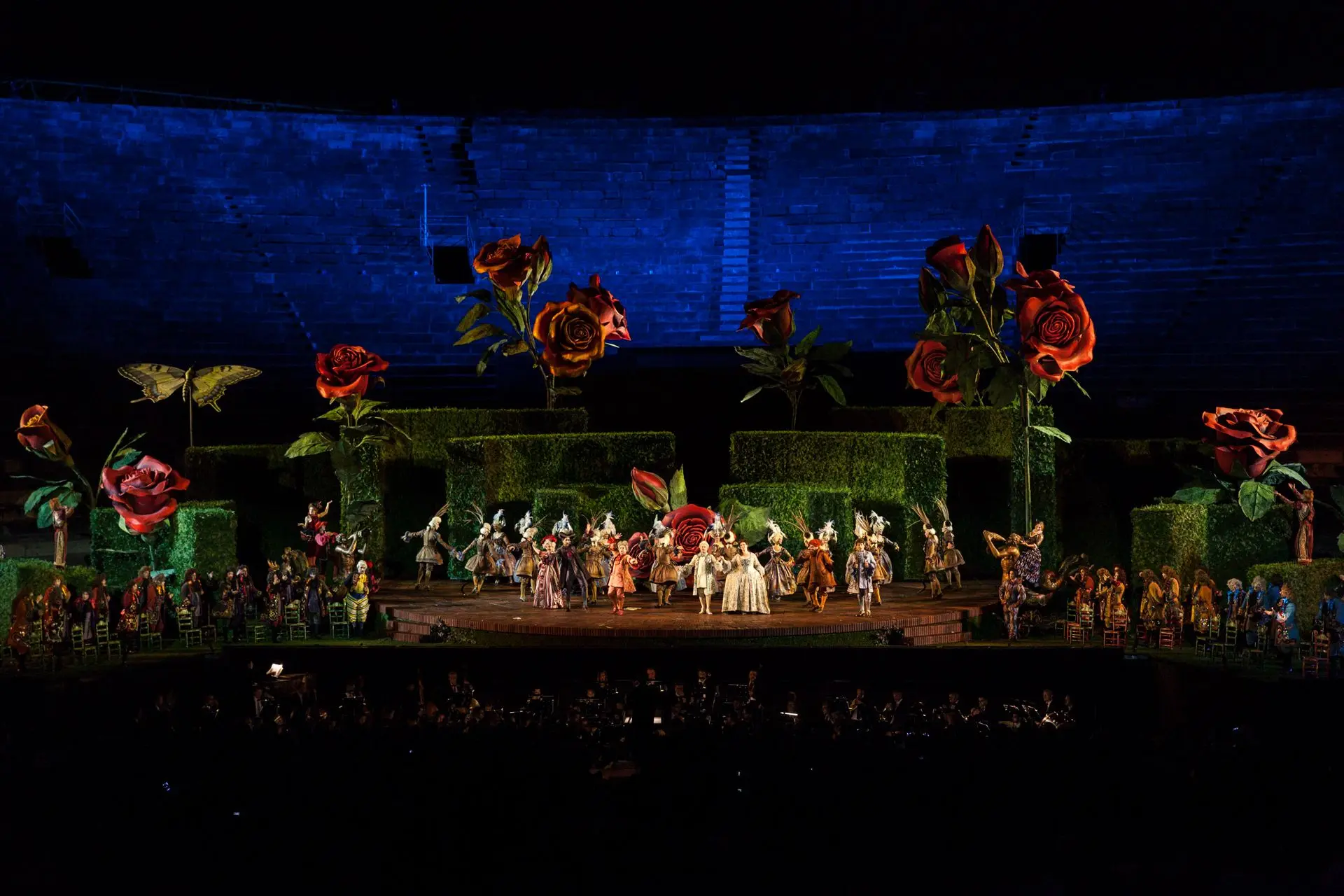
Il Barbiere di Siviglia
Inclusive opera bookletGioachino Rossini
Introduction
Il Barbiere di Siviglia
by Gioachino Rossini
Opera in two acts.
Libretto by
Cesare Sterbini
This is the accessible program booklet for Il Barbiere di Siviglia by Gioachino Rossini.
It provides audio versions of the texts, audio descriptions, and videos in ISL, International Sign Language. The texts can be easily zoomed in and out, and the contrast of the display can be increased. The “Audio Text” button plays the audio of the texts read by a male voice while the “Audio Description” button plays the audio descriptions of the pictures read by a female voice. The “ISL” button plays videos in International Sign Language.
By using this accessible program booklet, you give explicit consent to accessing content hosted on third party websites.
Synopsis

Act 1
Seville. The Count of Almaviva seeks the help of the cunning Figaro, the town barber, to win the heart of the beautiful Rosina, who is constantly watched over by her guardian, the elderly doctor Don Bartolo, who intends to marry her and pocket her inheritance. Rosina herself is determined to meet the man of her dreams (whom she believes is named Lindoro), unaware of his true rank or name. Meanwhile, Don Bartolo, worried that the famous Count is courting his ward, seeks advice from Don Basilio, a businessman and music teacher, who advises him to discredit his rival through slander. Upon discovering their plan, Figaro warns Rosina and suggests sending Lindoro a note, but deceiving the guardian proves much more difficult than expected. To complicate matters further, the Count bursts into the doctor's house disguised as a drunken soldier, causing such confusion that the civil guard are called in.

Act I

Picture 1
Count Almaviva.

Act II
The Count returns to Don Bartolo's house, disguised as a music teacher, and despite Figaro's best efforts to distract the tutor, their ruse is uncovered. Amidst the chaos, the maid Berta wonders what it is about love “that drives everyone to madness”. Taking advantage of the situation, Don Bartolo convinces Rosina that Lindoro is deceiving her, leading her to reluctantly agree to marry the doctor. Despite a storm raging outside, Figaro and the Count manage to reach Rosina and resolve the misunderstanding. With the arrival of the notary, the two lovers seize the opportunity to wed, and even Don Bartolo, realising the futility of resistance, blesses the newlyweds.

Act II

Picture 2
Figaro and Rosina.
Characters
Count Almaviva, Lindoro in disguise [tenor]
Don Bartolo, doctor, Rosina’s guardian [bass]
Rosina, a wealthy young lady by Bartolo’s [soprano]
Figaro, a barber [baritone]
Don Basilio, Rosina’s music teacher [bass]
Berta, by Bartolo’s old servant [soprano]
Fiorello, Almaviva’s servant [bass]
Ambrogio, Bartolo’s servant [bass]
An officer, a mayor or magistrate, a notary, constables or police officers, soldiers, musicians.
Director’s Notes

Hugo de Ana's Il Barbiere di Siviglia debuted at the 2007 Festival and has then become a recurring guest at the Arena di Verona. The opera aims to entertain, leaving aside any psychological considerations. There is no particular symbolism or double meanings. The idea is that of a light and effervescent production that avoids realistic comedy in favor of a game of pure abstraction. The Argentinian set and costume designer calls upon Rossini's irresistible humour and Leda Lojodice's choreography to evoke a rococo party, the style of which is reflected in the costumes.At the same time, the director stages the story and its comical characters, who at times recall the munchkins of the renowned Wizard of Oz, as if through a magnifying glass. The action takes place in an elegant Italian garden which deftly recreates exteriors and interiors that are functional to the narrative, with its ever-changing maze of hedges, colossal red roses and huge butterflies, as though inspired by Lewis Carroll’s Alice in Wonderland. In this magical setting, the characters move as though on a gigantic carillon, like puppets manipulated by the brilliant Sevillian factotum Figaro. At times, he appears to be a little man at the mercy of the comic events surrounding the love story between the Count and Rosina, caught up in a tempest with a happy ending.
Credits
The texts and images contained in this accessible program booklet have been provided by Fondazione Arena di Verona.
Design, planning, texts and descriptions
Elena Di Giovanni, Francesca Raffi (Università degli Studi di Macerata)
Technical supervision
ALI – Accessibilità Lingue Inclusione
Technical design, planning and digital development
Tadao Agency
Voices
Marco Quaglia (texts)
Giulia Heathfield Di Renzi (descriptions)
Videos in ISL
Daniel Bongioanni
Disclaimer
Copyright in these pages is owned by Fondazione Arena di Verona except where otherwise indicated by a third party's proprietary notice. These pages and the material published on them are also protected by intellectual property laws and may not be reproduced or appropriated in any manner without written permission of their respective owners.
For more information, please contact commerciale@arenadiverona.it